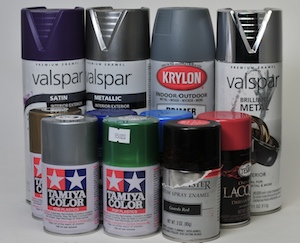Masking is a very important step when it comes to detailed painting. Once you venture from painting whole pieces, you will find that great detail can come from treating different parts of the same piece differently. To do so, you’ll need to mask the pieces to avoid getting paint on the rest of the piece. While primarily used when applying paint via a can or airbrush, it can be used during hand painting to ensure a straight line.
Tamiya v. Off the Shelf
When masking pieces, I highly recommend getting a hold of some Tamiya brand masking tape (the yellow roll in the above photo). While your average beige brand is effective in stopping paint I’ve had many issues with paint seeping in along the edges. As a result, I do all of my edges with Tamiya and cover the rest with the generic stuff (blue painters tape or otherwise).

